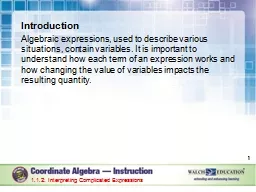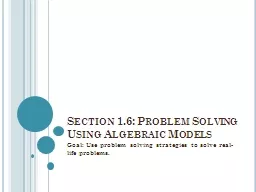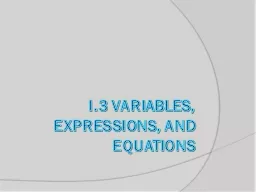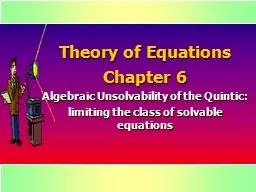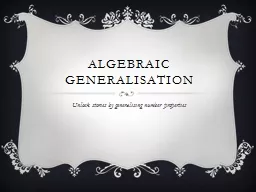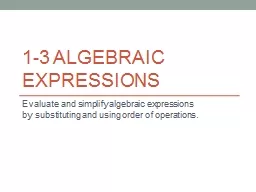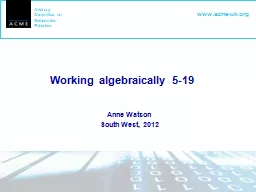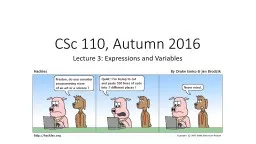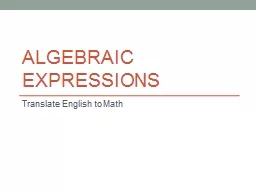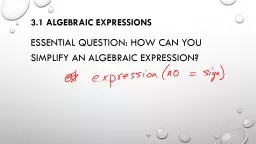PPT-Introduction Algebraic expressions, used to describe various situations, contain variables.
Author : ellena-manuel | Published Date : 2018-11-06
to understand how each term of an expression works and how changing the value of variables impacts the resulting quantity 112 Interpreting Complicated Expressions
Presentation Embed Code
Download Presentation
Download Presentation The PPT/PDF document "Introduction Algebraic expressions, used..." is the property of its rightful owner. Permission is granted to download and print the materials on this website for personal, non-commercial use only, and to display it on your personal computer provided you do not modify the materials and that you retain all copyright notices contained in the materials. By downloading content from our website, you accept the terms of this agreement.
Introduction Algebraic expressions, used to describe various situations, contain variables.: Transcript
Download Rules Of Document
"Introduction Algebraic expressions, used to describe various situations, contain variables."The content belongs to its owner. You may download and print it for personal use, without modification, and keep all copyright notices. By downloading, you agree to these terms.
Related Documents

